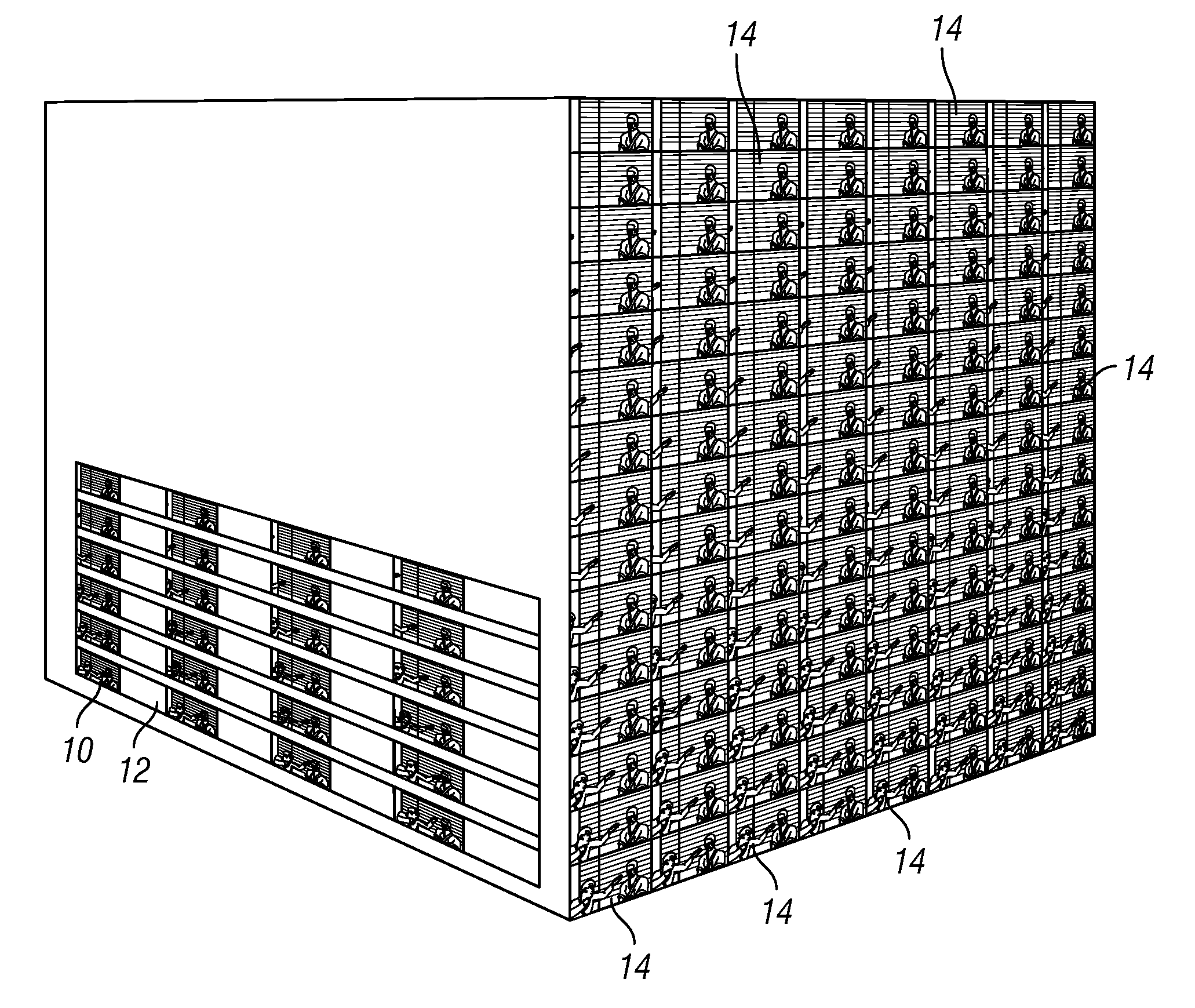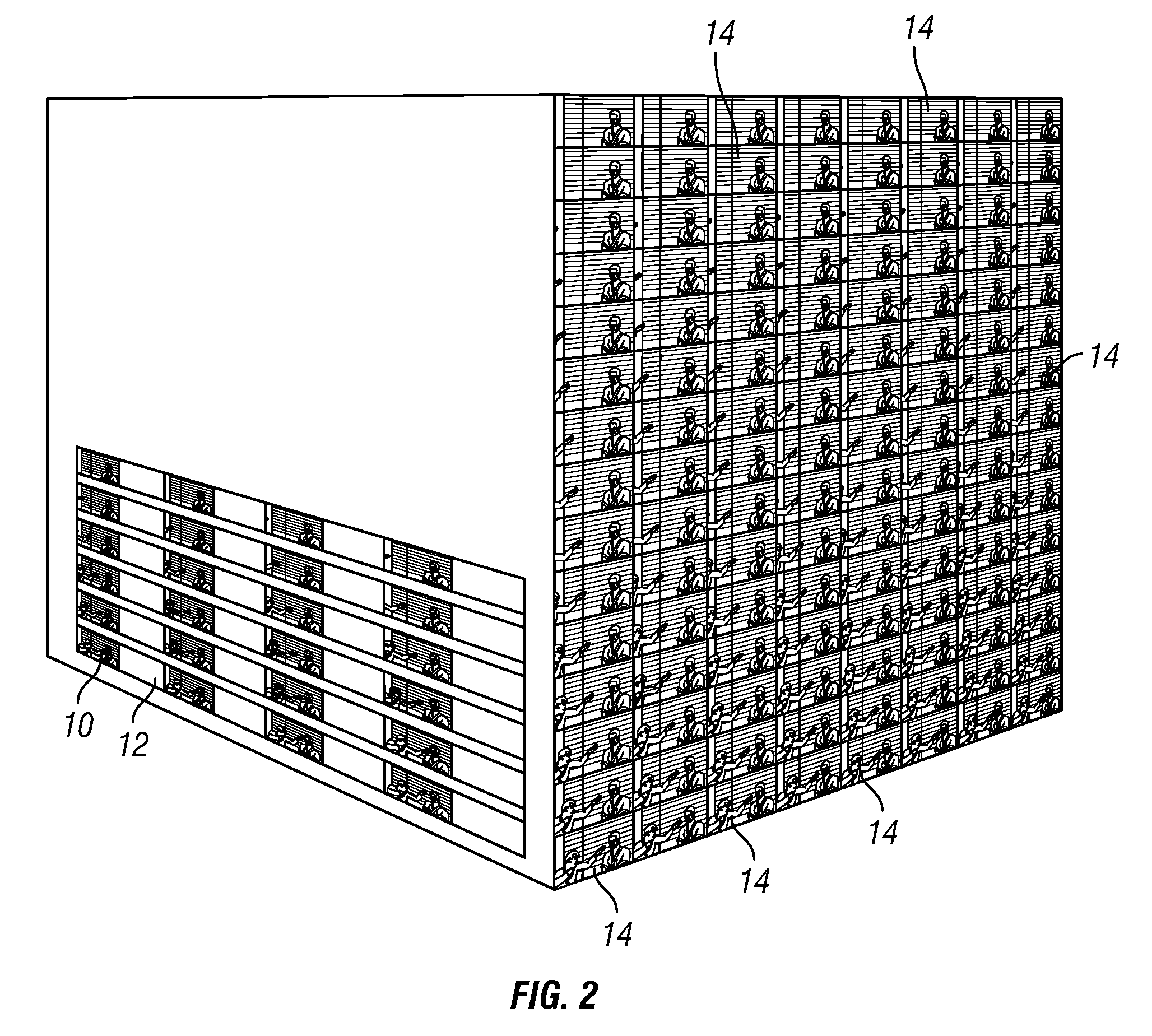Method and apparatus for photographing and projecting moving images
a technology for moving images and projection, applied in the field of motion picture photography, can solve the problems of screen size being considered a limitation, frame-to-frame image displacement can become quite objectionable, and the eye cannot integrate the sequence of frames into a smooth motion, so as to reduce motion displacement and blur, eliminate blur, and reduce strobing.
- Summary
- Abstract
- Description
- Claims
- Application Information
AI Technical Summary
Benefits of technology
Problems solved by technology
Method used
Image
Examples
Embodiment Construction
[0036]As discussed above, FIG. 1 illustrates the 24 frame per second industry standard film convention. As shown therein, the one second timeline consists of twenty-four frames 10 and twenty-four shutter closings 12. When filming at 24 frames per second, half the time the camera shutter is closed and the other half of the time the shutter is open, resulting in half of the action being lost forever. The action is simply not recorded when the shutter is closed. As discussed above, filming and projecting at 24 frames per second often results in blurring and / or strobing of fast moving objects or image elements. This is extremely undesirable and is often objectionable to the audience. Additionally, the audience is not able to see a clear picture of the action at the moment that the audience is fully engaged by such action.
[0037]Due to electronic cinematography and advancements therein, however, it is no longer necessary to simply think of a movie as a rigid series of photographs. Indeed,...
PUM
 Login to View More
Login to View More Abstract
Description
Claims
Application Information
 Login to View More
Login to View More - R&D
- Intellectual Property
- Life Sciences
- Materials
- Tech Scout
- Unparalleled Data Quality
- Higher Quality Content
- 60% Fewer Hallucinations
Browse by: Latest US Patents, China's latest patents, Technical Efficacy Thesaurus, Application Domain, Technology Topic, Popular Technical Reports.
© 2025 PatSnap. All rights reserved.Legal|Privacy policy|Modern Slavery Act Transparency Statement|Sitemap|About US| Contact US: help@patsnap.com



